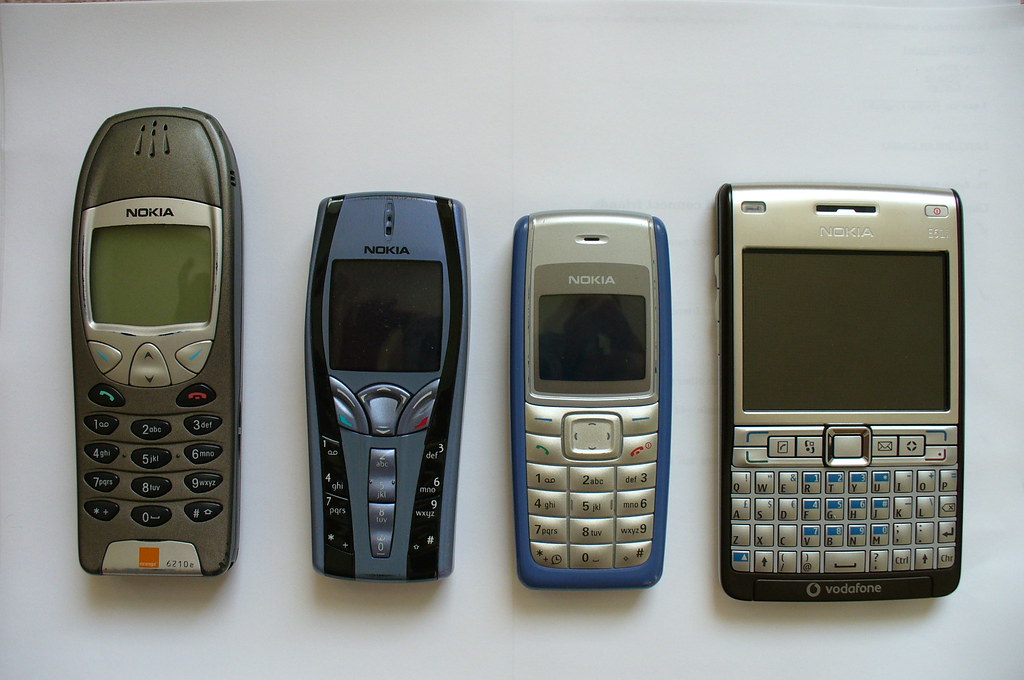Nokia’s old mobile phones hold a special place in the hearts of many, especially for those who witnessed the evolution of mobile technology in the late 90s and early 2000s. Renowned for their durability, simplicity, and iconic designs, these devices are often remembered with a sense of nostalgia. In this article, we’ll explore why these classic Nokia phones still resonate with people today, how they shaped the mobile phone industry, and why their legacy endures in the modern era.
The Origins of Nokia’s Dominance
Nokia began as a diverse company dealing in a variety of industries before it eventually became synonymous with mobile phones. In the 1990s, Nokia made its mark in the mobile market with the introduction of the Nokia 1011, the world’s first GSM phone. This innovation was followed by a series of groundbreaking models that were not only technologically advanced for their time but also highly user-friendly. Models like the Nokia 2110, which was introduced in 1994, further solidified Nokia’s presence by featuring one of the first versions of the SMS messaging system.
By the late 1990s, Nokia had revolutionised the way people communicated with the release of the Nokia 6110 in 1998. This model has often been celebrated for its design and durability, also included the now-iconic “Snake” game, which became a cultural phenomenon and contributed significantly to the brand’s popularity.
Iconic Models That Defined an Era
Several old Nokia phones have become iconic for their unique features and robust build quality. Let’s look into a few of the most memorable models:
Nokia 3310: It was Launched in 2000, the Nokia 3310 became a cultural icon due to its reputation for being virtually indestructible. It featured a basic but intuitive interface, long battery life, and the beloved “Snake II” game. Its simplicity made it accessible to a wide audience, and its legacy is so strong that it was re-released in 2017 with updated features.
Nokia 8110: It is Known as the “banana phone” due to its curved design, the Nokia 8110 gained additional fame after appearing in the 1999 film The Matrix. This model was one of the first to introduce a sliding cover for the keypad, a design innovation that set it apart from other mobile phones of the time.
Nokia 8800: It was launched as a luxury phone, the Nokia 8800 featured a stainless steel body and a smooth slide mechanism. It was aimed at a more premium market and became a symbol of elegance and style.
These models were not just phones; they were symbols of a technological era that prioritised durability, battery life, and straightforward functionality over complex features.
Why the Nostalgia for Old Nokia Phones?
There are several reasons why people still hold old Nokia phones in high regard. One of the main factors is their reliability. Unlike many of today’s smartphones, Nokia’s classic models were virtually indestructible. Their sturdy build and simple mechanics meant that they could withstand drops, water spills, and even the occasional run-in with a car tyre! The battery life was another factor that endeared these phones to their users. A single charge on a Nokia 3310, for example, could last up to a week, a stark contrast to today’s smartphones, which often require daily charging.
The Role of Nokia Phones in Shaping the Mobile Industry
Nokia’s dominance in the late 90s and early 2000s was more than just a commercial success; it helped shape the entire mobile industry. By consistently introducing new features and setting high standards for usability and design, Nokia pushed other manufacturers to innovate and improve. The introduction of the Nokia 6600 in 2003, one of the first smartphones with a camera and advanced multimedia capabilities, showed how Nokia was paving the way for the smart devices we use today.
Despite facing tough competition from emerging brands and the eventual rise of touchscreen technology, Nokia’s early contributions cannot be overlooked. It is not an exaggeration to say that the company set the groundwork for the modern smartphone.
The Revival of Nokia Classics
In recent years, Nokia has capitalised on the nostalgia for its old phones by re-releasing updated versions of some of its most beloved models. The 2017 relaunch of the Nokia 3310 was particularly well-received, as it brought back a cherished design with some modern updates, like a colour screen and basic internet capabilities. This strategy of revisiting classic models reflects the enduring love people have for the original devices.
The company has also ventured back into the smartphone market, using the appeal of its older models to remind consumers of the brand’s rich heritage. While the new devices are a far cry from the old feature phones, the spirit of simplicity and durability still resonates.
Why Old Nokia Phones Still Matter Today
Old Nokia phones are more than just relics of the past; they represent an era when mobile phones were simpler and more durable. For some, these devices serve as a reminder of a time when technology felt more personal and less consuming. As smartphones continue to evolve, becoming more sophisticated and complex, the simplicity of old Nokia phones stands in stark contrast.
Read More: Estrid Razor: A Comprehensive Review for UK Shoppers
